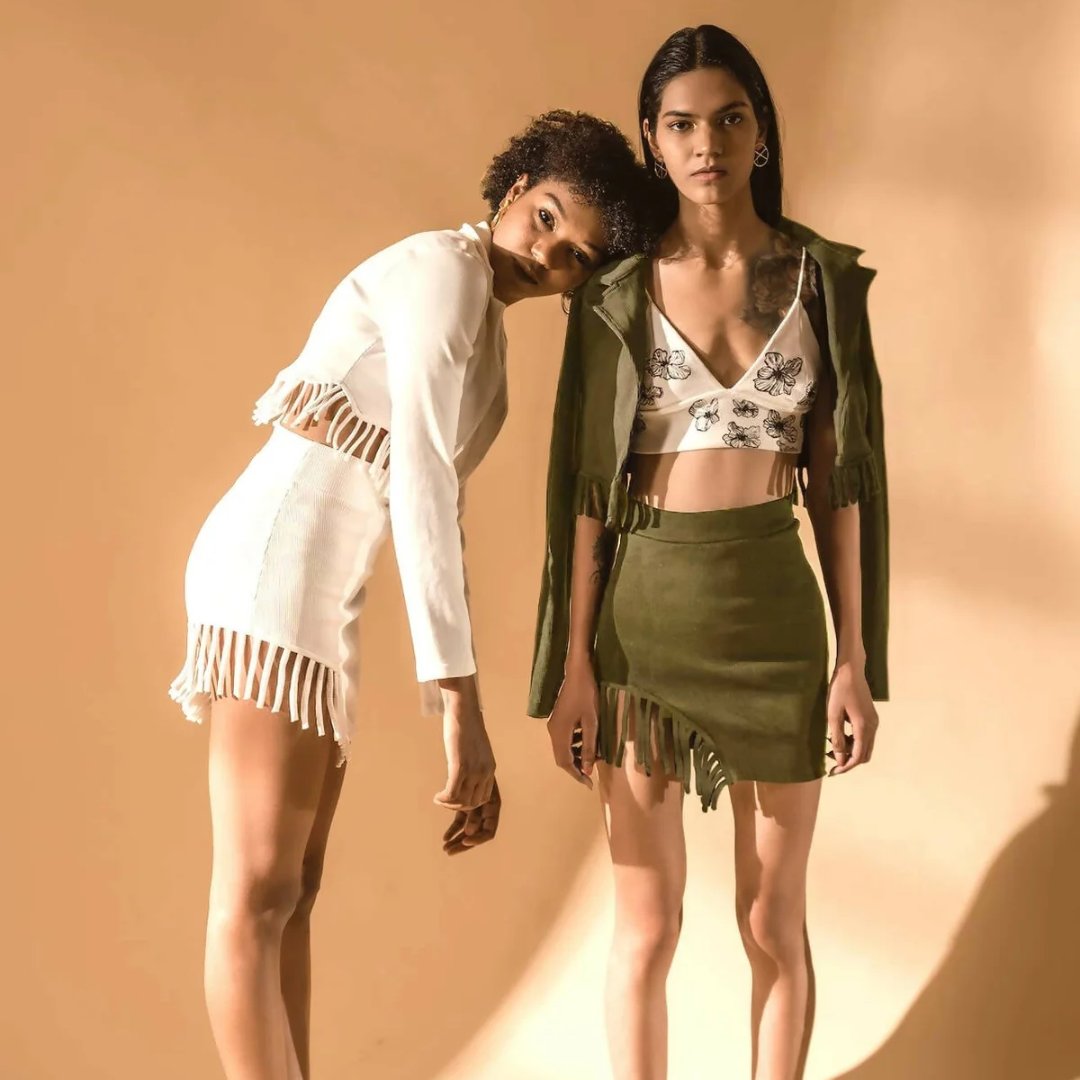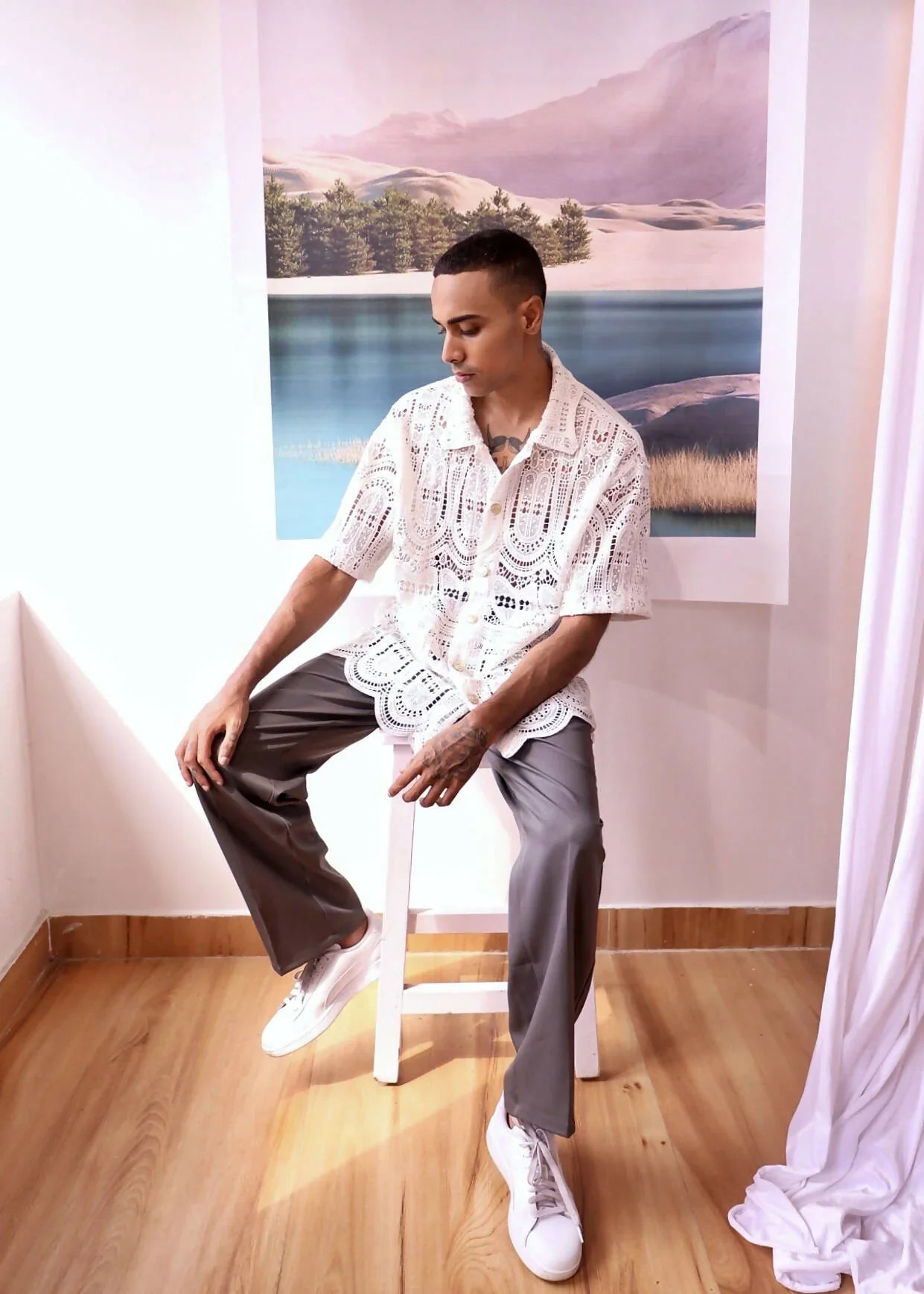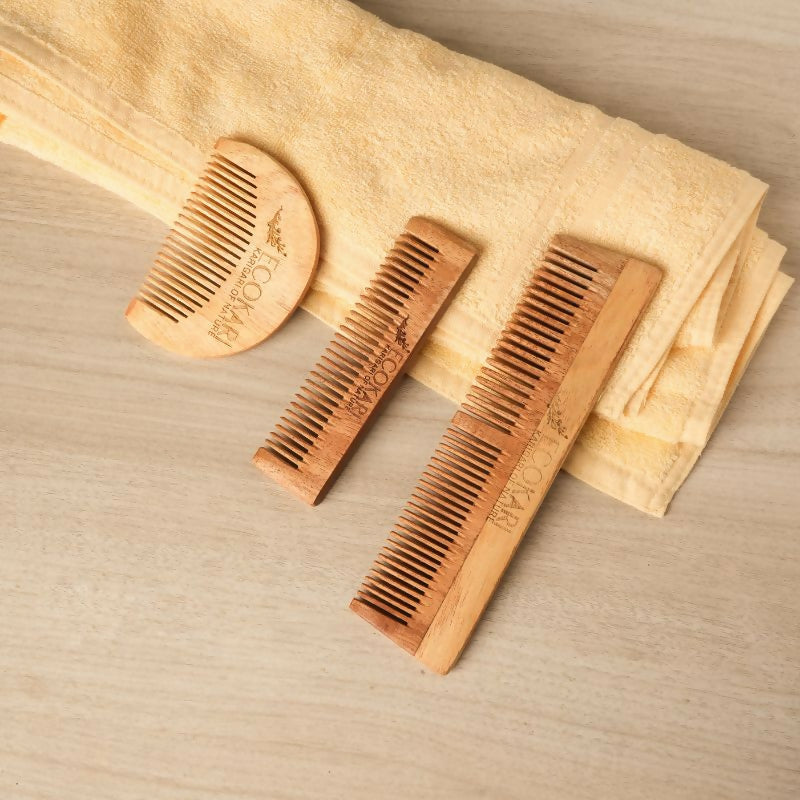Inai Interview
INAI is an upcycling brand that crafts timeless leather pieces using pure discarded Italian / Indian leathers, handmade by skilled Indian artisans in their workshop based in Madras, India. Their designs are meant to serve a specific purpose — a bag for everyday living, new adventures, emotional milestones and so much more.
We spoke to Sruti Ashok, the founder, to know more about her journey with Inai.

( Sruti Ashok, Founder of Inai )
REFASH: How was Inai born? Was there a defining moment that you can recollect?
Sruti: After working for a few years in Mumbai, I knew deep down I wanted to start something of my own, where I could be my own boss. Having an inclination towards fashion, the idea was to start a label in the sustainable space. Starting a leather brand in India wasn’t an obvious decision at first, but when I visited my father’s leather export factory and noticed the amount of waste and excess leather, an idea struck me.
I realised this could be a way to offer well-made leather goods by local artisans while upcycling the excess leather thereby doing our little bit to lessen the waste and offer beautiful pieces at the same time and that is how INAI was born.
R: What does the term ‘Inai’ mean?
S: 'Inai’ is a Tamil word, derived from ‘Inaippu’ which translates to ‘connection’. At Inai, we want you to connect with what you buy. We aim to inspire people to treasure and value the products they consume. We also want our customers to know the stories behind who, what and where our pieces are made.
We’re also proud to be a ‘Made in Madras’ brand.
R: Tell us a little bit about your background?
S: I’m originally from Madras, graduated from DJ Academy Of Design in Coimbatore where I studied Communication Design. Post this I headed to Mumbai, where I worked in a few design agencies for almost 3 years, on various projects ranging from branding to campaigns, illustrative work, website design and more.
R: Take us through your design process at Inai?
S: So our process is a bit different as I’m not from a fashion design background and we’re dealing with upcycled leathers, we begin with going through and sorting out the waste leathers/ collecting the excess, and the stock leather and shortlisting the textures /colours. From there, we ideate through sketches, keeping in mind aesthetics and functionality which is followed by an initial pre-sample, then a few changes, a few more samples, testing and then we have our final product.

( Designing at the Inai Studio )
R: Where do you usually source your leather from? Did you face more difficulty to source discarded leather rather than virgin leather?
S: We source our leather from our family-owned leather export factory, where there is plenty of premium stock and waste Italian / Indian leathers that lies unused. All of these leathers are from reputed and certifies tanneries. Yes, there are several difficulties with dealing with such materials, restrictions to certain styles depending on the quantity of material, you don’t get to choose what colours / types of leathers, access to limited supply of materials hence very limited product stock, identifying defects and damages in the leather so quality checks are very crucial.
R: In this era of overconsumption, how important & urgent do you think is for the designers to understand that waste is a design flaw?
S: I think with the direction in which the fashion industry is heading it’s a sign of many problems leading to wastage of material, overconsumption of clothing, low-quality materials and so on. I think awareness needs to be raised within the industry starting with brands making changes in their design / production process, educating young fashion design students to be aware and acknowledge the same in the pattern making process and providing avenues to access the waste for upcycling / recycling by smaller brands / individuals.
R: Being an entrepreneur is tough. Tell us what’s been one thing you’ve been struggling with lately.
S: As an entrepreneur managing a small brand, there are different challenges you face every single day. From accounts, making critical business decisions, to creating new designs and generally, time management can get tough some days but it is worth it after all.
R: With every low there’s a high. What have been some of your wins?
S: Every time we hear feedback from a customer who is extremely happy with their purchase that makes our day and when our old customers return to make purchases again, this truly pushes us to keep doing what we love.
R: In the first REFASH Pop Up we got a great feedback on the aesthetics & quality of your products, was that always a major factor for you when you started the brand that consumers should be interested in your products for the quality first and then the fact that it was upcycled?
S: Yes of course always! Quality over quantity every time. We always try to educate our consumers to buy better quality goods, that you really love and need and will use for years to come. The fact that it’s also upcycled is an added plus.
R: How essential do you think is to promote the movement of upcycling in India?
S: I think the idea of upcycling in fashion is growing with movements such as yours’ which promote brands in this space and by making consumers more aware.
R: How accepting has the Indian audience been to your brand?
S: We have a niche audience that understands the quality we offer in each and every piece and truly appreciate and connect to our brand ethos and values and admire that every single piece is made in our workshop by our artisans in Chennai, India.
R: How important do you think is for your brand to have an online presence?
S: INAI being an online brand, this is our main outlet to connect to our consumer. So apart from our website, our social media channels are where we communicate through our content and depict our brand values to our customers.
R: Which is your favourite ‘INAI’ bag?
S: My favourite bag would have to be our ‘Work Tote’, I carry it every single day to work. It’s the perfect everyday bag, that fits everything you need. It’s a classic style and very organised with plenty of pockets and sleeves for everything from your laptop, to chargers, your phone, pens etc.
( Work Tote by Inai in Caramel Brown )
R: Has your relationship with clothing changes as you delve into the world of sustainable fashion?
S: It’s been a few years since sustainability as a keyword entered my fashion vocabulary, mainly after discovering the Fashion Revolution movement. From then on I’ve made a conscious effort to completely change the way I consume, my outlook to fashion and other purchases too. I initially went on a complete no buy, stopped shopping from fast fashion brands and I choose to shop only when needed, from local / slow fashion / sustainable brands and also upcycle and have my clothes stitched by my local tailor. The change has made me downsize my wardrobe, develop a deeper connection to my existing clothes, try new ways to style my clothes and I’ve saved some money on the way.
R: If you could change one thing about the fashion industry, what would that be?
S: The Fashion industry has a lot of issues that need to be dealt with on an immediate basis, ranging from increasing fast fashion brands, immense waste in production / factories, pollution, unsold stock, unethical treatment of workers in the industry, overproduction and so much more. I feel even the smallest amount of change in any of these issues would definitely be an improvement, but one main thing I would begin with is bettering the treatment of garment workers, fair wages, ethical and safe working conditions and transparency about the people behind the products.
R: One thing you’d like the world to know about your brand?
S: We’d like to showcase the true talent, our wonderful artisans behind each and every INAI piece while also showcasing how upcycling can still be stylish and luxurious.
R: What is your vision for the brand?
S: My aim for the brand is to showcase our Indian craftsmanship and change the perception that ‘Make in India’ is luxurious and as good or even better than international standards.
R: In your opinion, what do you think is the problem with the way people are consuming fashion today?
S: Where do I begin, overconsumption mainly! Consumers are treating fashion as a very disposable, trend-based purchase. We tend to consume on an impulse, with trends dictating purchases, immense discounts and sales pushing consumers to purchase many items that they wouldn’t wear and are of low quality that doesn't last. We’re losing that connection or appreciation for our clothes, bags etc.
R: Do you remember the first upcycled product that you had bought?
S: So I can’t recall the first product, but I do get a lot of my clothes upcycled by local tailors.
From a young age, my mom has always been upcycling saris into outfits for me which I’ve continued. One particular outfit I have a special attachment with is this purple lehenga which was converted from my grandmom's sari when I was a teenager. After about 8 years or so I then had it converted into a high waist lehenga by adding a few borders and giving it a new look.
We have picked our favourite pieces from Inai, you can shop them on REFASH.
( Top left - Flat Clutch ; Top Right - Tassel Keychain ; Bottom Left - Passport Case ; Bottom Right -Saddle Bag )
--
Find them on Instagram.
Photo Credits - Inai
--










Leave a comment